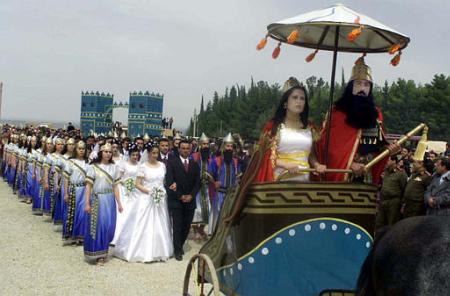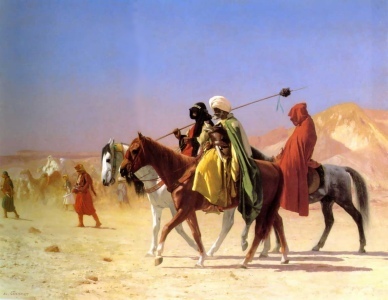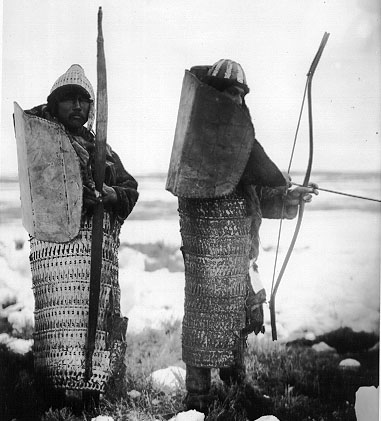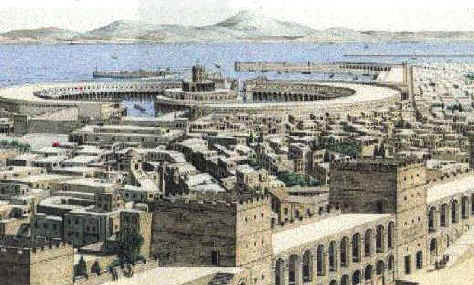This thread contains open information about the campaign world.
The World's Regions and Kingdoms
Setting Info — "The Libraries of Brahmu"
Setting Info — "The Libraries of Brahmu"
Last edited by Starbeard on Tue Jan 08, 2019 7:50 pm, edited 8 times in total.
Campaign map
A Map of Grand Hikuptah, from the Libraries of Brahmu
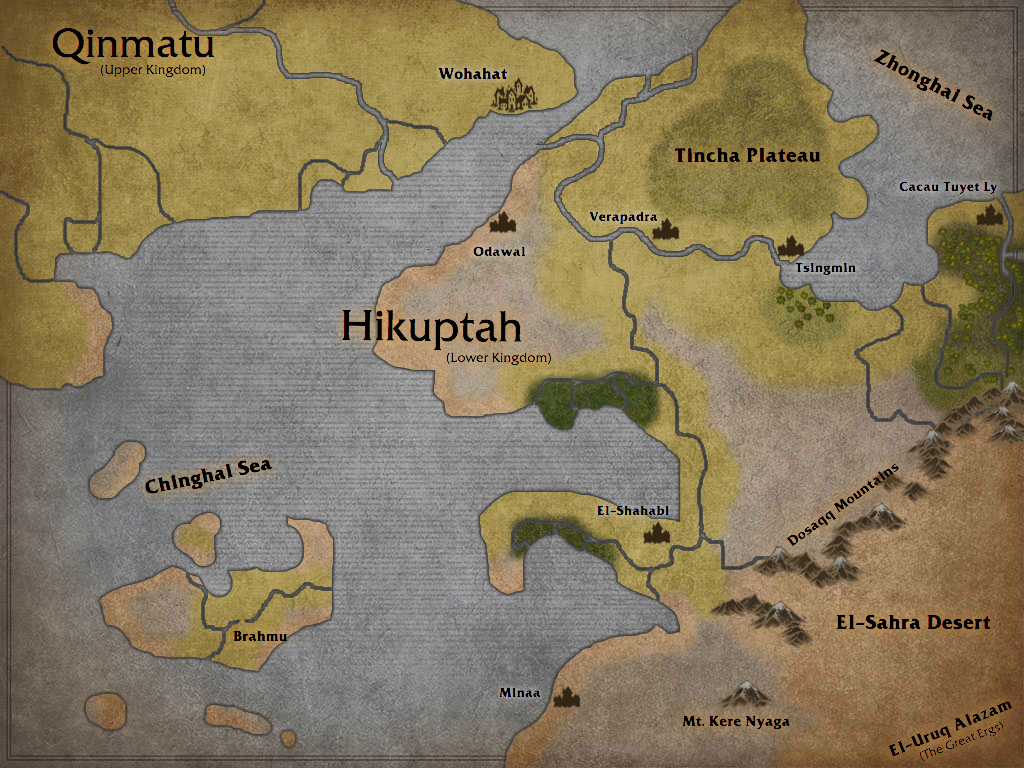

Last edited by Starbeard on Tue Jan 01, 2019 6:23 pm, edited 3 times in total.
Re: Lore of Hikuptah (setting info)
The New Kingdom
The New Kingdom stretches from Hikuptah to the northwest far beyond the campaign map. Ruled by a Pharaoh, the Kingdom is divided into two ‘nomes’, or states: the Upper Kingdom (a.k.a. Qinmatu) and the Lower Kingdom (a.k.a. Hikuptah). The action of the campaign takes place in the Lower Kingdom.
Pharaoh: Nakhat of the Previous Dynasty
The court of the Pharaoh is the model for all courts within the New Kingdom. Thus, the same positions should be present in the court of a Nomarch (the ruler of a nome), as well as in the court of a Satrap (city-state rulers appointed by the Nomarch).
Important Court Positions:
Grand Vizier
Mouth of the Pharaoh (chief treasurer)
Ear of the Pharaoh (royal scribe)
Hand of the Pharaoh (overseer/architect)
Foot of the Pharaoh (marshall)
Eye of the Pharaoh (inspecter general)
The Upper Kingdom (Qinmatu)
Qinmatu (‘Home of the Qinnu’) is the ancestral centre of the Pharaoh’s rule, built on the ruins of the Old Kingdom. The Pharaoh’s Own City, a metropolis of indescribable splendour, rests here. It is run by a Nomarch appointed by the Pharaoh.
The Lower Kingdom (Hikuptah)
The Lower Kingdom covers the southermost reaches of Qinmatu, as well as the rough wastes of Hikuptah (‘The Homeplace of the god Ptah’), a wild region controlled by the Nomarch in theory only. Definitely the poorer of the two nomes, the Lower Kingdom was formed in the wake of a militaristic expansion that occurred some 200 years ago, and many people of as many tongues live under the Nomarch's rod. The capital city of Wohahat lies at the southwestern edge of Qinmatu, far from the barbaric deserts of Hikuptah.
The Satraps of Hikuptah
Each of the cities of Hikuptah is ruled by a satrap, supposedly appointed by the Nomarch of the Lower Kingdom—in reality, the city-states of Hikuptah are fierce and independent, some being older than Wohahat itself, and the Nomarch often has little say in how things are run.
Pharaoh: Nakhat of the Previous Dynasty
The court of the Pharaoh is the model for all courts within the New Kingdom. Thus, the same positions should be present in the court of a Nomarch (the ruler of a nome), as well as in the court of a Satrap (city-state rulers appointed by the Nomarch).
Important Court Positions:
Grand Vizier
Mouth of the Pharaoh (chief treasurer)
Ear of the Pharaoh (royal scribe)
Hand of the Pharaoh (overseer/architect)
Foot of the Pharaoh (marshall)
Eye of the Pharaoh (inspecter general)
The Upper Kingdom (Qinmatu)
The Lower Kingdom (Hikuptah)
The Satraps of Hikuptah
Each of the cities of Hikuptah is ruled by a satrap, supposedly appointed by the Nomarch of the Lower Kingdom—in reality, the city-states of Hikuptah are fierce and independent, some being older than Wohahat itself, and the Nomarch often has little say in how things are run.
Last edited by Starbeard on Sat Aug 15, 2015 10:30 pm, edited 2 times in total.
Re: Lore of Hikuptah (setting info)
The Empire
Little is known of the vast kingdom which stretches infinitely into the East. It goes by many names: the Empire, the Middle Kingdom, Trunguo, the Barbarian East. What is known is that it is ruled by a terrible and immortal Emperor, and that it is larger than one man's mind can comprehend.
Traders and warriors from a thousand cultures pour into Hikuptah from its westernmost trade routes, contesting the Pharaoh's rule over the land. Where they settle they bring the harsh bureaucracy of the Empire, with its uniformed soldiers and scholar-rulers.
Traders and warriors from a thousand cultures pour into Hikuptah from its westernmost trade routes, contesting the Pharaoh's rule over the land. Where they settle they bring the harsh bureaucracy of the Empire, with its uniformed soldiers and scholar-rulers.
Last edited by Starbeard on Tue Jan 01, 2019 6:27 pm, edited 5 times in total.
Hikuptah
The City-States of Hikuptah
Being a short description of the major cities of the Lower Kingdom, prepared by Morod the Red, a priest and historian of Brahmu.
WohahatWohahat is a metropolis and the largest city in all of the Lower Kingdom; Simaddin has told me some half-a-hundred thousand souls live in Wohahat, and I believe him because I have been there twice. The nomarch's palace overlooks the whole city, built entirely with turquoise and marble. I was ten when the Pharaoh made his nephew Hagmesh nomarch of the Lower Kingdom, which means he has ruled from Wohahat for twenty-three years, and must be an old man by now.
The people of Wohahat are more like their northern brothers in the Upper Kingdom, and are superior to the barbarians of Hikuptah in every way, except perhaps in their indulgence. It is now fashionable on Brahmu to wear the fancy silk dresses men use in Wohahat, and our men will even weep if they cannot purchase a new dress once they have seen it, like they have seen men do in Wohahat.
OdawalAstelax, Satrap of Odawal, is a man of the Nomarch and was appointed by him to rule the small city-state of Odawal, which is called the Gateway to Hikuptah. This is not true, because I know many ship masters who pass through Brahmu would rather harbour at El-Shahabi or Minaa, or take the river to Tsingmin and trade with the Empire, than stop at Odawal. Still, it is a strong city with good walls, and is loyal to the Nomarch.
They are shrewd traders, and a little educated in proper things, but like Brahmu the folk of Odawal find too much pleasure in perfume and drunkenness.
El-ShahabiThe small seaport of El-Shahabi rests along the coast of Hikuptah, and for four generations has been ruled by the Caliph of Yahuq's Temple, from father to son. The Caliph today is Shah Zahir, but he is young and sickly, and has a harelip; some say this is divine punishment for the actions of the previous Caliph, who took his sister's daughter as a concubine and ended the goat sacrifice on Mt. Kere Nyaga, but I do not know about that.
El-Shahabi pays taxes to the Nomarch, but the Caliphs value their independence and make a show of having no ruler but themselves. This is a thorn in Hagmesh's side, and two wars have been fought between him and the Caliphs.
In El-Shahabi are the most vile folk in all of Hikuptah. Only the heathen nomad tribes and the soulless fishmen are worse. The men of this city are always sour, because of the grey lotus they make into a tea and imbibe for their religious feasts. When someone drinks the tea and performs the prescribed ritual, if he has just the right balance of humours he will become a prophet. However, if the tea is prepared wrong he will go mad and foam at the mouth, and become angry.
MinaaThe proud Sultanate of Minaa is older than any kingdom in this world. Brahmu was once a city-state under its care, long ago when men were better. The Nomarch pretends to give Sultana Dinarzade the right to rule over Minaa, but this is little more than foolish pride. Minaa has never been subjugated by any king, and Wohahat could not storm its impregnable walls if it sent its entire army. The Sultana is fond of reading, and keeps every scroll and papyrus in her library.
BrahmuBrahmu was once an important island within the Sultanate of Minaa, but now only a handful towns remain, and the rest of the island is home to wolves. We are known for making strong ships. We have no ties to any kingdom, and watch the slow death of Hikuptah from afar.
Verapadra, Tsingmin and Cacau Tuyet Ly
These cities are not part of the New Kingdom. The eastern two are under the rule of the Empire of the Middle Kingdom, but Verapadra is a small, independent city of traders. The Khan of Verapadra pays taxes to both the New Kingdom and the Empire, and so manages to avoid any conflict from either side. The nomad races of the Tincha Plateau, however, often harass caravans coming in and out of the city.
Being a short description of the major cities of the Lower Kingdom, prepared by Morod the Red, a priest and historian of Brahmu.
Wohahat
The people of Wohahat are more like their northern brothers in the Upper Kingdom, and are superior to the barbarians of Hikuptah in every way, except perhaps in their indulgence. It is now fashionable on Brahmu to wear the fancy silk dresses men use in Wohahat, and our men will even weep if they cannot purchase a new dress once they have seen it, like they have seen men do in Wohahat.
Odawal
They are shrewd traders, and a little educated in proper things, but like Brahmu the folk of Odawal find too much pleasure in perfume and drunkenness.
El-Shahabi
El-Shahabi pays taxes to the Nomarch, but the Caliphs value their independence and make a show of having no ruler but themselves. This is a thorn in Hagmesh's side, and two wars have been fought between him and the Caliphs.
In El-Shahabi are the most vile folk in all of Hikuptah. Only the heathen nomad tribes and the soulless fishmen are worse. The men of this city are always sour, because of the grey lotus they make into a tea and imbibe for their religious feasts. When someone drinks the tea and performs the prescribed ritual, if he has just the right balance of humours he will become a prophet. However, if the tea is prepared wrong he will go mad and foam at the mouth, and become angry.
Minaa
Brahmu
Verapadra, Tsingmin and Cacau Tuyet Ly
These cities are not part of the New Kingdom. The eastern two are under the rule of the Empire of the Middle Kingdom, but Verapadra is a small, independent city of traders. The Khan of Verapadra pays taxes to both the New Kingdom and the Empire, and so manages to avoid any conflict from either side. The nomad races of the Tincha Plateau, however, often harass caravans coming in and out of the city.


